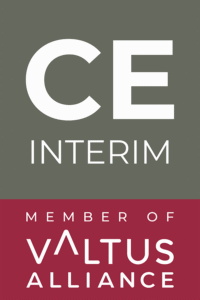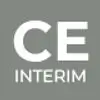Не хватает времени на чтение полной статьи? Прослушайте краткое содержание за 2 минуты.
Resilience Has Replaced Efficiency
For decades, Germany’s Mittelstand perfected the art of industrial efficiency. Lean setups, low inventory, supplier concentration, and streamlined logistics ruled the playbook.
But today, that very optimisation has become exposure.
Energy volatility, supply disruptions, and labour shortages have shaken the foundations of centralised production models. The realisation is clear: resilience–not efficiency–is now the core source of competitive advantage.
Where once efficiency won markets, now it risks losing them.
The Cost Logic of Yesterday Is Today’s Risk
The economic equation that justified single-country manufacturing no longer holds.
Industrial electricity in Germany remains among the most expensive in the world. Labour shortages are not cyclical but structural. And geopolitics has turned once-stable trade lanes into unpredictable variables.
A manufacturer relying on one key plant or one key supplier risks losing not just margins–but customer confidence.
Diversification Is Strength, Not Weakness
Contrary to popular fears, cross-border diversification is not a burden. It’s a strategic advantage.
The new triangle of industrial resilience is Germany + CEE + MENA. Together, these regions offer proximity, cost balance, and risk spread.
Germany provides IP protection, automation readiness, and ESG credibility. CEE brings scale, speed, and skilled labour. MENA is emerging as a logistics and energy-flexible option for wider EMEA access.
Firms that move early across these regions build optionality that their competitors simply won’t catch up to.
What Belongs Where? Rethinking the Industrial Footprint
I. Germany’s Shifting Role in the Value Chain
Not everything should leave Germany. On the contrary, re-industrialisation is underway–but it looks different this time.
High-IP processes, complex assembly, and AI-integrated operations are being reshored. Firms want more visibility and trust in their critical production steps. Germany offers this–but not for everything.
Production that can be digitised, outsourced, or staged closer to raw materials is often better placed in Slovakia, Romania, or Hungary. Final assembly for fast markets may move to North Africa.
II. The Rise of Dual-Site Logic
The smart move is not to choose–but to combine.
A dual-site model offers both stability and flexibility. For instance:
- Heavy pre-assembly in CEE
- High-complexity finalisation in Germany
- Optional re-routing depending on logistics, tariffs, or capacity
This model allows Mittelstand firms to remain fast, visible, and risk-balanced without losing their quality DNA.
Planning Is Not the Problem. Execution Is.
I. Where Strategy Stalls
Ask most CEOs if they have considered diversification. The answer is yes.
Ask how many have moved beyond slide decks. Fewer hands go up.
Permits, legal friction, unclear ownership, and capacity issues stall the transition. In many cases, there’s no one internally who can lead the cross-border setup full-time without sacrificing existing operations.
II. Execution-First Resilience Means 90-Day Traction
Resilience must be operational, not theoretical.
Это значит:
- Appointing a clear project head
- Securing supplier commitments early
- Establishing daily progress reviews
- Synchronising Germany and CEE site expectations
- Treating the transition like a launch, not a workshop
In the first 90 days, visible traction builds credibility. That traction doesn’t need to be perfect—it needs to be real.
What CEOs Must Ask Now
To lead with resilience, Mittelstand CEOs must challenge their operating assumptions.
Start here:
1. Which steps in my current value chain create the most risk exposure?
2. Where can I build optionality with minimal complexity?
3. Which CEE or MENA partners are already active in my supply tier?
4. How fast could we activate a second production location—today?
5. Who inside my organisation owns cross-border execution?
If these questions cannot be answered confidently, the risk is not just external. It’s internal inertia.
Subtle Acceleration Through Interim Leadership
Many companies have the strategy.
Few have the muscle to execute it while keeping daily operations stable.
That’s where interim project heads add value–not by consulting, but by building. Their neutrality, tempo, and cross-border experience allow for fast, visible movement within weeks–not quarters.
На сайте CE Interim, we support cross-border diversification and resilience projects by deploying site leaders, project COOs, and transformation experts who step in when momentum is needed most.
When the goal is resilience through action, not discussion, interim leadership is not a cost–it’s a catalyst.
Final Word: Resilience Isn’t a Response. It’s a Design Principle.
The Mittelstand doesn’t need more planning.
It needs movement.
Cross-border diversification isn’t a reaction to crisis. It’s a proactive shift in how industrial advantage is built. Waiting for stability in an unstable world is not prudence–it’s exposure.
Resilience is not about reacting when things go wrong. It’s about designing your business so things go right–even when the world doesn’t.
The next move belongs to the ones who don’t wait.





